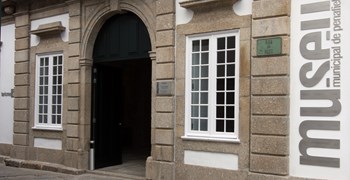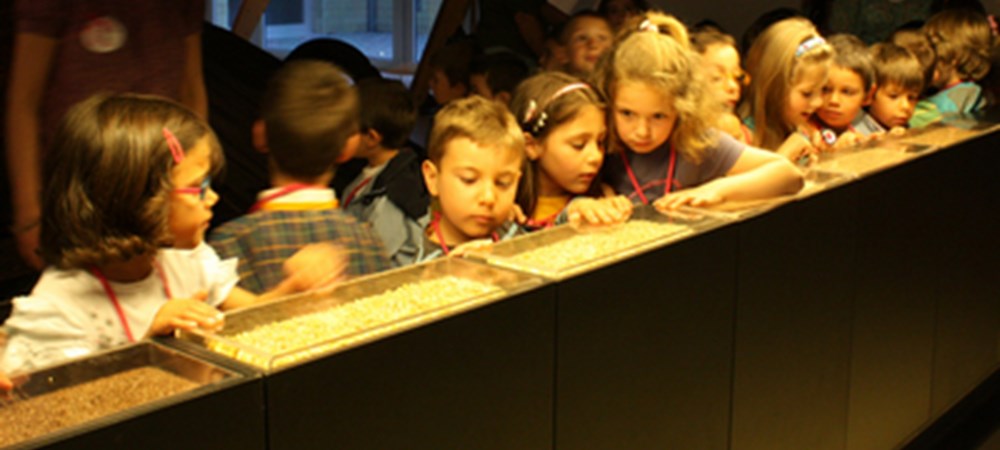A museum of affections
Portuguese Museology Association - Institution Award 2012
For more than sixty years, the Municipal Museum of Penafiel, owned by the Penafiel’s City Council, has been a permanent public structure, foundation of the municipality’s planning and management policy for cultural resources and playing a crucial role in the preservation and promotion of important values of its movable, immovable and intangible heritage, as well as in the urban planning. Established in 1948, the museum was settled in temporary buildings for decades, until it was totally renewed in 2009, this time with an excellent location, right in the heart of the city’s historical and shopping centre, installed in one of the most emblematic buildings for the local community, an eighteenth century palace, which had been the main school for generations of people.
Being part of the Portuguese Network Museum since 2003, the Penafiel’s Museum was nominated for the European Museum of the Year Award in 2010, and won, in the same year, the award for the Best Portuguese Museum, given by the Portuguese Association of Museology, who recognized once more the importance, quality and high standards of this museum in the Portuguese museologic panorama by giving us the prize for the Best Museum Website and, most of all, the Institution Award in 2012.
Currently, the Penafiel’s Museum holds a large exhibition and services area, providing it with the best conditions to welcome its visitors and users. The collections mainly cover archaeology, ethnography and local history, and besides a large Temporary Exhibition Room, visitors can enjoy the five themed rooms in the Permanent Exhibition, where the focus is on a clear and modern approach to the displays, supported by different levels of information aimed for a variety of audiences, and relying on many modern multimedia resources, where interaction, pedagogy and fun are the driving force.
In the Identity Room the aim was to portray the historical evolution of the municipality by displaying a collection of documents, with a very appealing graphical animation and visual treatment. The construction of identity is also embodied by some carefully selected pieces and by the attention given to some personalities, who are part of the collective imagination of the local community.
In the Territory Room the emphasis is on the various dimensions of what the land of Penafiel is, from a geographical, historical, administrative, touristic or heritage perspective, presented in a fun and interactive manner, where visitors can virtually ‘wander’ along the township through a special device, on which an animation is projected and through which you can “take a peek at the sights”.
In the Archaeology Room, visitors can explore five thousand years of archaeological remains, entering a more obscure and mysterious dimension that appeals to all senses by recreating monuments and spaces to scale, taking the public back to the past. The highlights include not only the bold and original way in which some of the pieces are displayed, but also the importance of the role of the archaeologist, his work and duty to convey and promote knowledge about the past.
In the Crafts Room, visitors can discover the main traditional craft practiced in the past, shown as based on two main strands - iron and wood - and closely connected to the two main festivities of the city: the Corpus Christi celebration and the Saint Martin’s Fair, evoked through images where their past lives alongside with the present. The video images are also the gateway that leads us into the magical world of these crafts, where the knowledge of generations of craftsmen was handed down.
In the Land and Water Room, the rural universe is portrayed to evoke the old traditional ways of exploiting these natural resources, which in some cases have survived to our days, but in other have long been forgotten. Emotions are also aroused by the remarkable solution developed to display the two traditional boats that can be seen here, and by the soundtrack that takes visitors back to the rural universe.
As a territory museum, in addition to the head office in the city centre, the Penafiel’s Museum has now three museologic extensions opened to the public: the Iron Age archaeological site of Monte Mozinho, the water mill of Novelas and the olive oil press of Sebolido, all spread through different parishes away from the city. In all these extensions, as well as in the 38 parishes of the council, the action of the museum through its wide educational programme and the heritage service is the main cultural support of its community, who embraces the museum and its projects as their own, being a motif of proud and an object of true affection.
Because museums are made of people, we rely on a very young, highly qualified and motivated team, who also, strongly embraced this new project ever since the beginning. Our main goal was to become the house of the community, the guardian of its heritage, identity and collective memory, establishing with it a permanent relationship involving respect, work and love.
We now see that affection when the emigrants come in the summer, proudly showing their museum to friends and family. We see it when local associations want us to be their partner in all kind of projects, and when people see us as their trustful consultant. We see it in the hundreds of object donations which constantly enlarge our collections, or when people volunteer to help us in anyway. We see it when the schools come every day to team up with the staff and teach, together, the future generations. We see it when the elderly come to the museum just to go back in time, enjoying the replay of traditional ways of living. We see it in our children, faithfully bringing their parents to participate in our activities, enjoying family quality time, or even when they now prefer the museum to a funny playground for making their birthday parties...
We finally see it, every single day, in people’s eyes, when leaving joyfully but wanting to stay longer, since they truly feel this museum as being their home too, making us believe that we are in the right path to accomplish our mission – a museum of affections, from people to people.












